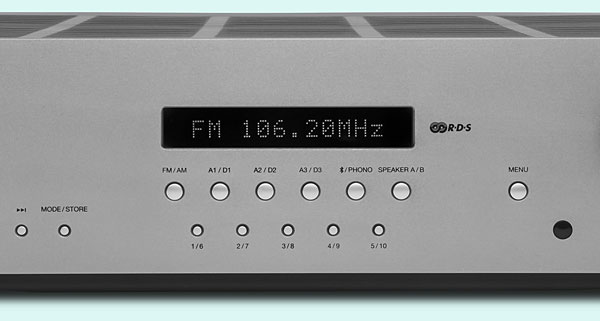Cambridge Audio AXR100 Stereo Receiver Review

AT A GLANCE
Plus
Fine amplifier power and sonics
Subwoofer output
Full-sized, full-function remote control
Bluetooth streaming
Minus
No USB type-B input for computer connection
No onboard Wi-Fi
Limited ergonomics
THE VERDICT
Cambridge Audio's stereo receiver may be simple, but it features an excellent amplifier, solid DAC performance, and a useful FM tuner.
They still make stereo receivers? Who knew! But seriously, folks—I'm here all week. Stale humor aside, there will always be a sure market for high-quality audio playback, with access to terrestrial-broadcast radio, AKA good old FM, and a basic feature set for hooking up outboard components. And Cambridge Audio's AXR100 is one of a small but growing cadre of current-day stereo receivers aiming to satisfy it.

British stalwart Cambridge Audio—that's Cambridge as in punting on the Cam, not duckboats on the Charles—has a well-earned reputation for judiciously balancing audiophile desires with the imperatives of value, an equation to which the AXR100 seems well-targeted. Its 100-watts-per-channel amplifier is supplied by an impressively solid power supply, including a substantial toroidal transformer, something not always seen at this entry-ish level. Also of note is onboard digital-to-analog-conversion, in this case a 24-bit/192-kHz circuit served by optical and coaxial digital inputs but lacking the USB type-B port you'd need to connect a laptop or other computer source directly. I frankly found this omission to be surprising, given that hi-res streaming is the audio "it" of the moment, and streaming directly from a connected laptop is the easiest and cheapest way to get on board. (Surprised, that is, until I poked around the agora a bit, where I found that none of the other under-$1,000 stereo receivers, regardless of brand or country of origin, includes this all-important input, either.)
In other terms, feature-wise the Cambridge is unabashedly basic. It has three stereo analog RCA inputs, a moving magnet phono input, and a fourth, auto-selecting analog-input on a front-panel mini-jack for conveniently connecting portable devices like a phone via its headphone output. The only audio outputs other than speakers-level, which are provided in duplicate as selectable speakers-A/B on light- duty plastic multiway jacks, are a fixed-level analog record-output and a single subwoofer jack, which is low-pass filtered at a fixed, 12 dB/ octave 200 Hz curve.

Up front the AXR100 is quietly handsome: I liked the look of its mouse-gray brushed-aluminum fascia a lot, and the single volume knob and multiple pushbutton controls all have a solid, high- quality feel. Hookup in my system required little more effort than connecting my loudspeakers, Energy Veritas 2.2i's, whose uh, mature (long discontinued) but still very capable design yields low enough sensitivity to get even a 100-watt amplifier like the Cambridge to break a modest sweat. Making both analog and coaxial digital audio feeds from my Oppo Digital disc and streaming source and digging out an FM dipole antenna from the odds'n'ends drawer completed the setup. (I did not bother with AM radio since there's so much amplitude-modulated hash in my environment—and also likely in yours—that any results wouldn't mean much.)
Listening
In terms of audio performance, a design like the AXR100 is mostly about the amplifier, and Cambridge's acquitted itself very well indeed during my evaluation. Beginning with the known quantity of analog input from my Oppo player's stereo analog outputs, a paragon of recorded sound like "I Got the News" from Steely Dan's Aja (a Tidal hi-res stream) was every bit as solidly punchy as it should be, with Chuck Rainey's classic gut- bucket I-IV-V intro sounding clean and impactful even at chest-tapping volumes, while both the terse piano (from super-sideman Victor Feldman) and delicate cymbal fills (drummer Ed Greene) remained pristine. All of which suggested that Cambridge Audio's amplifier design and execution are more than competent, especially for a more- or-less affordable design.





























































